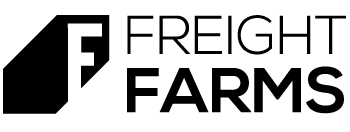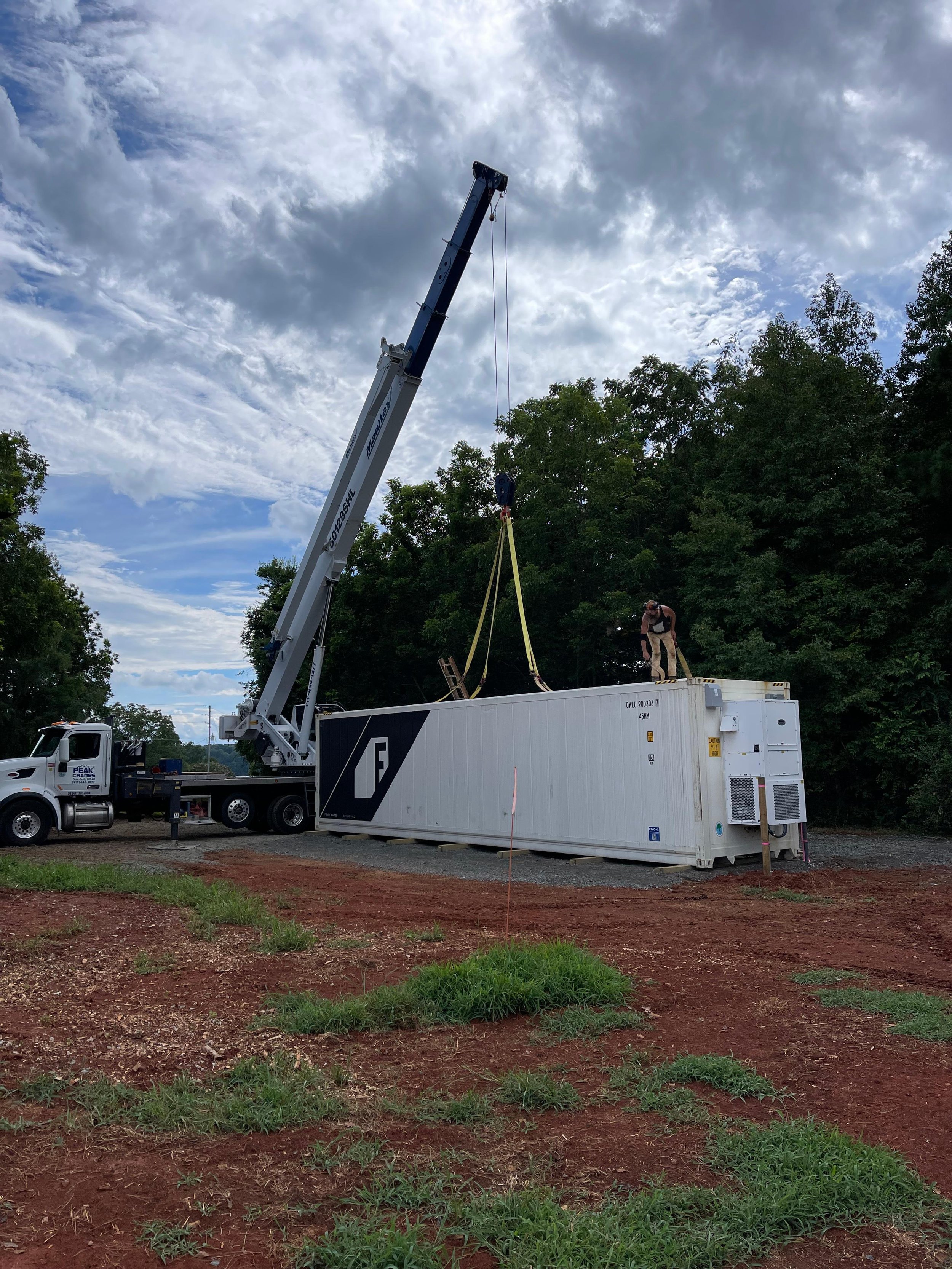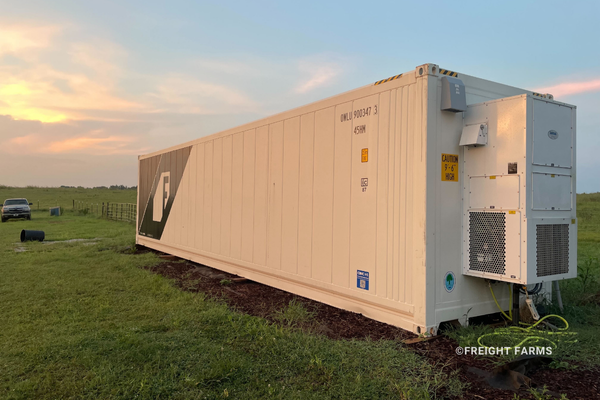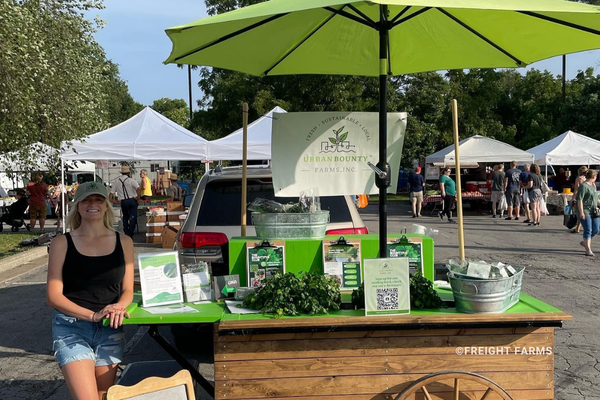The Freight Farms Guide to Finding Customers
Finding the right customers for your farming business
So you’ve decided to start a farming business. You probably have a lot of questions...
Who do I sell to?
Which crops should I grow?
How do I price my crops?
In this article, we’re going to explore these questions, share 5 tips to determine their answers, and identify 4 different customer segments and their characteristics. But first, something you should know right off the bat:
The answers to these questions are very market-specific, and vary farmer to farmer. However, our team is always happy to work with farmers one-on-one to give them personalized information and answers. Your best bet is to contact us directly!
Now, for our tips.
1. Understand the value of your product.
Before you start speaking with local businesses, we recommend you read our post on the value of hyper-local produce to understand the quality of the produce that grows inside the Greenery™ S. It's important that you can confidently articulate the value of your produce — such as:
Hyper-Local: Same- or next-day delivery since you’re located close to the customer, meaning peak freshness and nutrition of produce.
Clean, Pesticide-Free & Food Safe: Not only are your greens free of pesticides, herbicides, and waxes, but they’re also safe from disease. As a farmer in a transparent, distributed system, your crops are safe from centralized outbreaks of foodborne illnesses like E. coli. All the crops grown in the Greenery S are clean and safe in the event of an outbreak.
Longer Shelf Life: By harvesting and delivering the same day, you’re cutting out the 1–2 weeks that produce typically spends in transit. You bring customers produce at its peak, so it can stay fresher, longer — easily lasting for three to four weeks(!) in the fridge.
Less Waste: Because Greenery S produce lasts so long, there’s less waste — of food, and of money. Grocery stores and customers won’t have to throw out produce that becomes limp and slimy after only a few days on the shelf, which means they’re not wasting money, either.
Year-Round Availability: Consistently high-quality produce regardless of the season.
Grow Unique Crops: Flavor profiles and varieties that customers can’t find anywhere else.
Beyond the value, you should also remember that many people are unfamiliar with hydroponics and vertical farming. Being prepared with materials that explain how your produce is grown and why it’s special will help convey the value of your greens to potential customers.
2. Utilize your resources.
Your market is your community! Go out and speak with multiple types of businesses in your area that could benefit from access to hyper-local greens 365 days a year. The sooner you start speaking with potential customers about your project, the sooner you’ll have a good sense of which crops are in high demand, volume requirements, local produce prices, and more. This will help you build your business plan.
3. Approach the right customers.
Over the years, we’ve learned a lot from our container farmers about which markets are most responsive to the Freight Farms mission. We’re exploring the top four: Community Supported Agriculture (CSA), farmers markets, restaurants, and grocery stores. They fall into two distinct categories: direct-to-consumer and business-to-business.
DIRECT-TO-CONSUMER
These business models offer the reward of hearing directly from the consumers of your crops. Cons: You will have to justify the cost difference between your product and that which is found at the grocery store. Pros: This is easy to do! Just check out the values we listed above.
Community Supported Agriculture (CSA)
In a CSA, consumers sign up for a subscription to your farm’s produce and receive a share every week or two. Since it’s a subscription-based model, CSAs have the added benefit of defining your demand (and securing the funding for it) up front, so you know exactly how much to plant of which crops.
Farmers Markets
Get a booth at one (or a few) local farmers markets. This sales channel can be a bit more time consuming, but it exposes your product to a much wider audience and means that you don’t have to market your business to gain customers — farmers markets are an excellent place to organically meet people in your community that are excited about local food (and may be interested in signing up for your CSA come the off-season!)
BUSINESS-TO-BUSINESS
When it comes to mass market, it’s all about buzz words! Fresh, local, pesticide- and herbicide-free…these are terms everyone’s looking for on their packaging and menus. Market your product using these key terms and intentional packaging to attract the decision makers.
Restaurants
Restaurants make great customers because you’re working with individuals who value high-quality, exceptional taste, and unique varieties (and are willing to pay more to get them). With farm-to-table dining trendier than ever, this is the ideal time to approach potential restaurant customers. You’re able to guarantee chefs consistent quality, quantity, and pricing, and can even offer to customize your crops to fit restaurants’ needs, including less common varieties that aren’t typically available commercially. Bring the Freight Farms crop guide with you to wow chefs with your potential. And as another plus, packaging for restaurants is usually cheaper, easier, and can often be reused, cutting down on your production costs.
Grocery Stores
More and more, regional chains and small business grocers across North America are focusing on carrying and promoting local/natural/organic products. This sales channel typically requires farmers to spend a little more on packaging, which must effectively market your product to in-store shoppers but will not be reusable.
For this sales channel, consider giving away produce samples at busy shopping times (like Sunday afternoons!). While your samples wow potential customers, you’ll get an opportunity for face-to-face interaction, to share pamphlets and information on your business, and to market your CSA. Specialty food stores are excellent customers to target because they already cater to customers that are looking for local, quality products like artisanal cheeses, vegetables, and drinks. Your produce matches this brand, and can help round out the stores’ year-round offerings. Larger grocery chains, too, are a great place to sell your produce, though this is typically a channel best suited for a mature farming business with two or more container farms (because your produce will need to be price-competitive in the mass market, and offsetting lower prices with higher production will help you be successful).
4. Consider your operational and financial capacities.
All of these customer channels (and others) can be very successful and rewarding. And it’s often a good idea to sell to multiple channels, to make sure you sell all of your produce each week and have a consistent customer base, even if one buyer falls through. However, as you plan your business, make sure to consider the resources required for each of these customer segments. This includes operational resources (time spent packaging, driving, delivering, and finding customers) and financial resources (like packaging, printed materials, and farmers market fees). Having a solid idea of what you’re willing to commit to before getting involved with a customer segment will help you with growing pains later on. To see how these requirements can affect your profits, contact us to access our Business Planning Tool.
5. Keep an open mind!
Most farmers start in one customer segment, then switch to another, or end up diversifying their business to multiple segments. Stay curious, talk to people, and see where their interests lead you.
Want more help? Contact us directly.
The Freight Farms team has years of experience helping farmers find their niche customer base.














